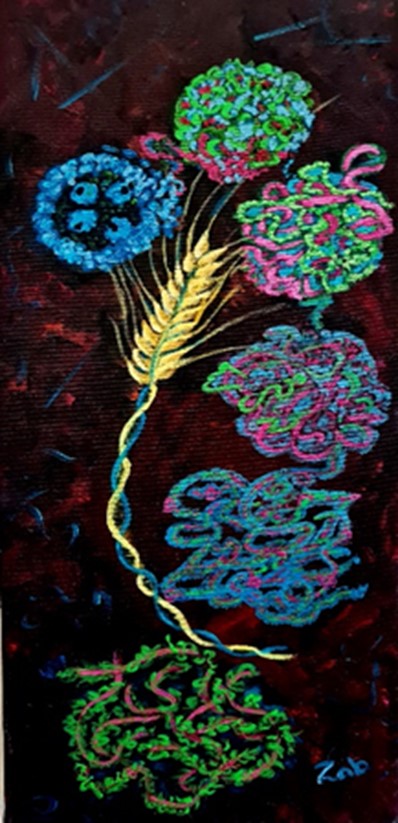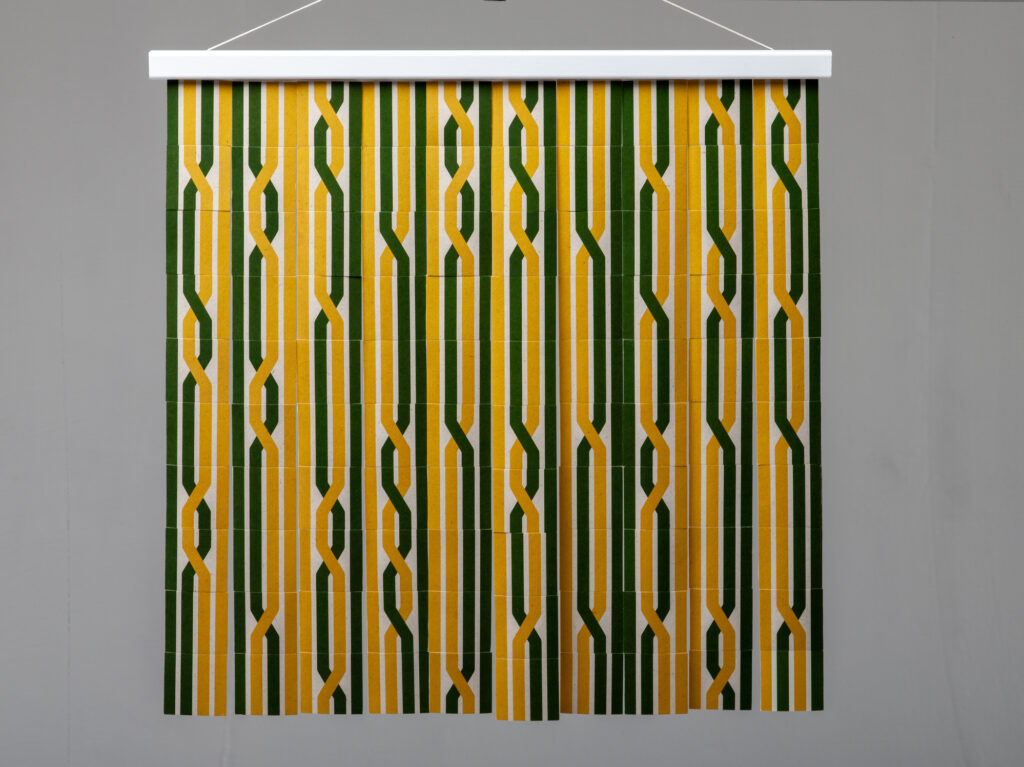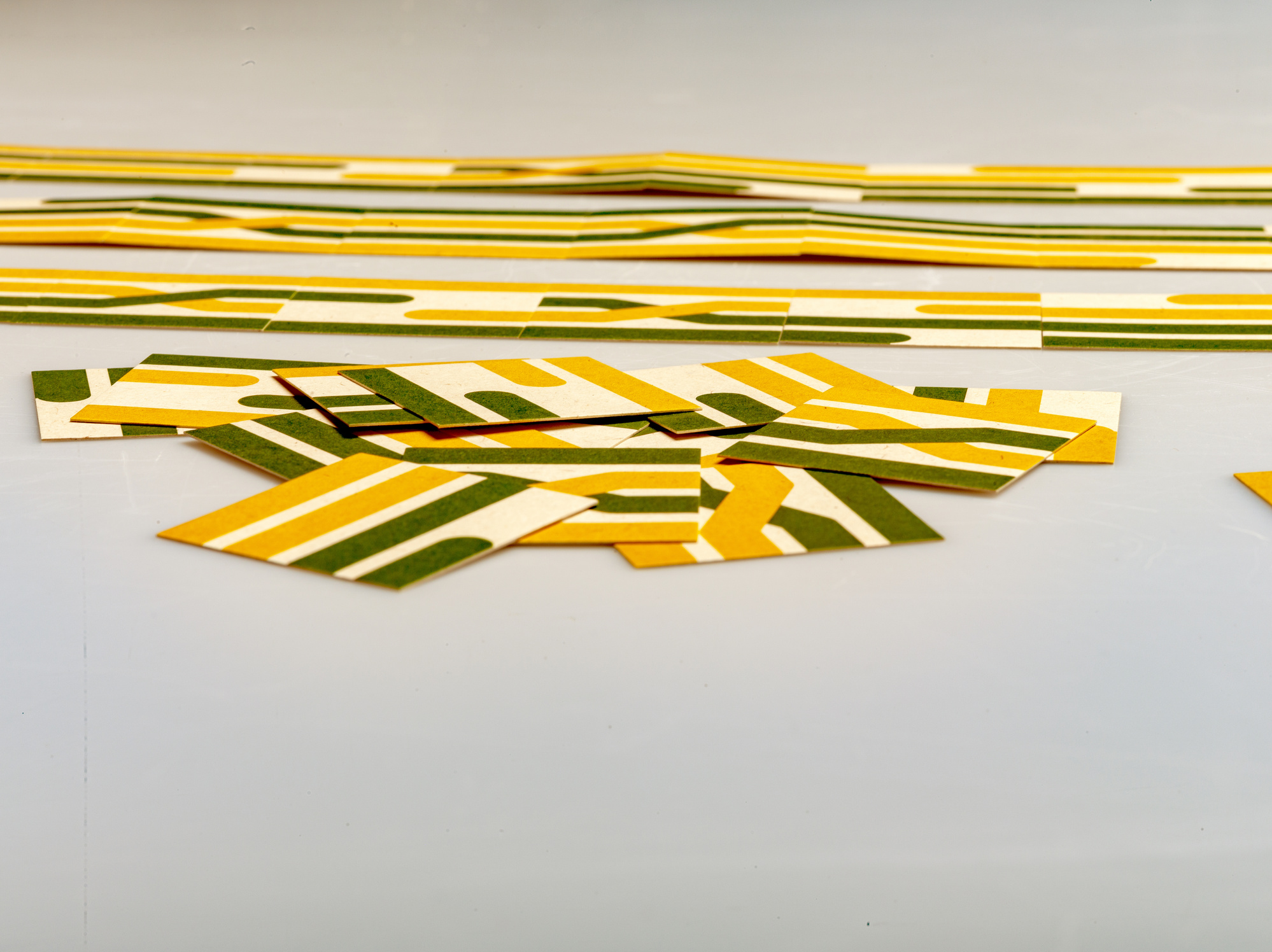Science is fascinating and scientists like me are passionate about what we do. We can talk for hours about our work, recent findings, or fascinating new technologies. We use unfamiliar words to describe mechanisms and processes, and often, we forget that not everyone is as passionate as us about what we actually do. My work is about a process called meiosis, a specialized cell division that produces male and female gametes (i.e. sperm and eggs).
Uploaded on behalf of Dr Isabelle Colas

Painting by I. Colas
Now I realise that I may have lost half of the readers already, but if you think about it, most people know that a baby is made by fertilisation of a maternal egg cell by a paternal sperm cell. Well, it is these specialized cells that are made during meiosis. The process re-assorts different versions of genes present in each parent’s DNA and passes the resulting mix onto the offspring. The result is the unique combination of gene variants in the DNA of every offspring that ultimately defines the characteristics of each and every individual. Of course, meiosis also happens in plants. However, in barley (Fig 1), the process of re-assortment does not occur randomly, and large portions of each chromosome containing many genes are excluded from the process. My research is to understand why this happens and to use this understanding to extend genetic re-assortment into these currently excluded regions. I argue this will be important for future breeding efforts to improve the crop.
In 2019 I approached Gillian McFarland and Ruth Singer, two artists who have had some experience in illustrating molecular science using a range of media. I was fascinated by their exhibition on DNA at Leicester University Department of Genetics, and looking through their work, I was became motivated by the prospect of convincing them to create a piece of art that symbolised barley meiosis and the process of genetic re-assortment. We started by discussing meiosis and why it is important. I explained the molecular aspects of how the different versions of genes were actually re-assorted using diagrams from a scientific textbook. This gave Gillian and Ruth the information required to stimulate their thinking about how to create an artistic representation of this complex biological process. They designed and produced a set of cards that illustrate how re-assortment actually happens – but that can be used by anyone to explore the uniqueness of the products that are the end result. The cards were printed on paper including straw to represent barley.
The next step was to expose the cards to the general public to illustrate and explain how genetic reassortment underpins what is commonly referred to as ‘inheritance’. We first used the cards this during our annual public science event called Plant Power Day (Fig 2). Every spring, scientists from the University of Dundee and the James Hutton Institute deliver science activities for kids (and parents) of all ages. One popular activity is about ‘chromosome remodelling’, which teaches kids about what happens during the process of cell division. Using salt dough and a cookie cutter we can represent each of the steps that occur when a cell divides.
This year, we created a new activity about meiosis, where Ruth and Gillian’s cards were used as a teaching aid to show the unique genetic changes that occur naturally by chromosomal re-assortment. Ofcourse some participants simply tried to be artistic or create specific patterns, but at the end of the day they generally understood the importance of meiosis and gene re-assortment.
Our last step was to use the cards to create a mural that illustrates at the molecular level what happens during genetic reassortment (Fig3). The final composition has been framed and will be displayed in the International Barley Hub, showcasing one aspect of barley science in a public friendly way. For me the project has been a fascinating experience which has been made possible by some gracious funding from UKRI and the creativity and skill of Gillian and Ruth. As a result, I am keen to explore more opportunities to work with artists to illustrate complex biological processes in elegant and attractive displays.



Funding
This work has received funding from BBSRC BB/T008636/1

